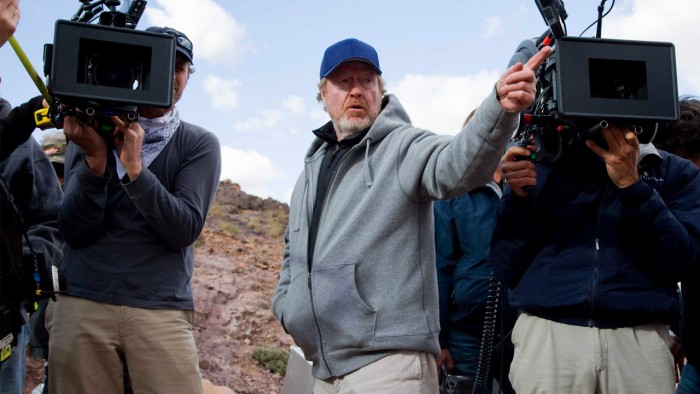How 'The Martian' Would Have Been Different With Water On Mars
Ridley Scott's adaptation of The Martian sees Matt Damon playing a NASA astronaut stranded on Mars in a story of survival and hopeful escape from the deadly planet. This week NASA revealed new findings that reveals that potentially life-giving water still flows across the planet's ancient surface. How does this discovery change what you will see on the big screen? How might The Martian be different now that NASA has released this new confirmation? What if there was water in The Martian? Find out, after the jump.The Martian star Matt Damon who tweeted out this video message after yesterday's monumental news:
A discovery like this deserves a toast from Watney himself. #MarsAnnouncement #TheMartianhttps://t.co/7VKoMP8Gex
— The Martian Movie (@MartianMovie) September 29, 2015
But Damon's character couldn't just drink the Mars water as is. Bobak Ferdowsi, who you may remember as the mohawk-sporting systems engineer at NASA's Jet Propulsion Laboratory from the Curiosity landing, responded to a tweet from the movie's official account advising against Damon's character drinking any Mars water:
@MartianMovie Watney noooooo, don't drink the Mars water.
— Bobak Ferdowsi (@tweetsoutloud) September 28, 2015
Author Andy Weir wrote the book over a handful of years ago, when we knew much less about the possibility of water on Mars. Weir revealed to Mashable that if he were to write the book today, the liquid water would have been included in the story — but maybe not in a way that you would expect.
"I absolutely would include the briny water," Weir said. "I'd have put it in the Schiaparelli crater."
Martian water would be a hindrance to Damon's character, not a help as many would expect. Here is how the liquid water would have been included in the novel (possible spoilers coming up):
Readers of the book will remember that's the crater that holds the Mars Ascent Vehicle (MAV) that lifts Watney off planet. The astronaut has to drive a vast distance to get there, and when he arrives, suffers a rover rollover at the edge of the crater. Instead of that rollover being the result of poor driving, Weir said he would have written it so that the rover gets trapped in the sudden flow of wet sand that we now know to be a seasonal occurrence on Mars.
Weir likes "the irony of" the fact that the character has so much trouble securing his drinking water early in the book, "then gets brought down by undrinkable streams of the stuff."
 The Martian director Ridley Scott and his screenwriter Drew Goddard worked closely with NASA to make the film's science as realistic as possible. The filmmaker revealed to Yahoo Movies the following:
The Martian director Ridley Scott and his screenwriter Drew Goddard worked closely with NASA to make the film's science as realistic as possible. The filmmaker revealed to Yahoo Movies the following:
"When I first talked to NASA, we got into all kinds of stuff and I said, 'So I know you've got down there [these] massive glaciers.' And he said, 'Yeah, that the massive white thing [on the surface of Mars] that gets covered with dust, we think that's ice,'" Scott recalled. "And I said, 'Wow! Does that mean there was an ocean?' Are we right now what Mars was 750 million years ago?' And they went, 'Uh, good question.' So they want to go up there and find out.'"
Scott claims that he was shown photographs of water flows by NASA "about two months ago", but by then it was too late to include the information in the plot of the film. But the movie version of The Martian would have also incorporated water in the film if they had time. Ridley Scott told the New York Times:
"He would've found the edge of a glacier, definitely. It would be fascinating. But then I would've lost a great sequence. He has to make water, and the steaming device, and put up the plastic tents, which creates the humidity, which grows the plants, which is the most basic form of irrigation. They still do it in Spain that way."

